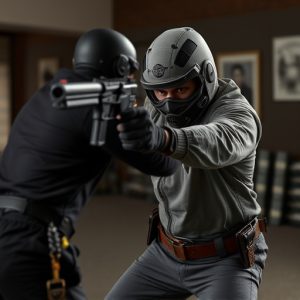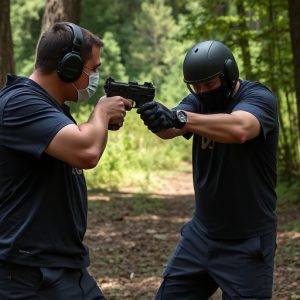Understanding Stun Gun Effects: Optimal Choices for Home Defense
The best stun guns for home defense temporarily disable intruders by disrupting muscular control thr…….
The best stun guns for home defense temporarily disable intruders by disrupting muscular control through electric shock, with duration influenced by voltage output, body type, and resistance. Smaller, lighter models with precise contact points offer prolonged disruptions without excessive discomfort, while higher-powered devices deliver stronger shocks lasting longer, effectively immobilizing attackers. Targeting legs and arms is particularly effective, but the abdomen and chest contain vital organs susceptible to electric current. Legalities vary across jurisdictions; understanding rules ensures responsible use. Key features in a best stun gun include high voltage output, precise current control, smart chips, longer pulse durations, and easy activation mechanisms for swift, effective disabling.
“Discover the surprising science behind muscle incapacitation from stun guns and how it can temporarily paralyze an opponent. This article delves into the intricacies of stun gun usage, exploring factors like power, voltage, body zones, and legal implications. Learn which attributes make a stun gun the best choice for home defense, ensuring you’re prepared with knowledge to neutralize threats effectively while adhering to the law.”
- Understanding Muscle Incapacitation: What Happens When Stun Guns Are Used
- Factors Influencing Duration of Muscle Paralysis from Stun Guns
- The Role of Stun Gun Power and Voltage in Determining Inability to Move
- Comparison of Stun Gun Effectiveness Across Different Body Parts
- Legal Considerations: How Long Can You Legally Hold Someone with a Stun Gun?
- Choosing the Best Stun Gun for Home Defense: Features That Enable Effective Muscle Incapacitation
Understanding Muscle Incapacitation: What Happens When Stun Guns Are Used

When a stun gun is deployed, its primary goal is to temporarily incapacitate the target by disrupting their muscular control. This is achieved through the delivery of an electric shock that overloads the nervous system, specifically targeting motor neurons and causing a loss of muscle function. The duration of this incapacitation is a critical factor in determining the effectiveness of a stun gun for self-defense.
The best stun guns for home defense are designed to render a target unconscious or immobile for several minutes, providing enough time for the user to escape or summon help. This period of muscle incapacitation typically ranges from 3 to 5 minutes, during which the individual may experience disorientation, loss of balance, and severe muscle spasms. However, it’s important to note that factors like the stun gun’s voltage output, the target’s body type, and their resistance to electric shock can influence the exact duration of incapacitation.
Factors Influencing Duration of Muscle Paralysis from Stun Guns
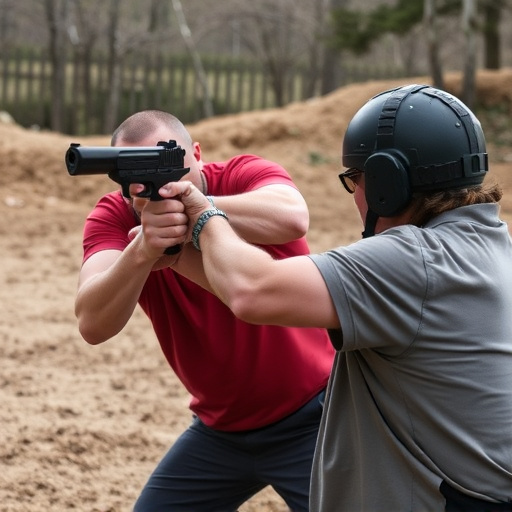
The duration of muscle incapacitation caused by stun guns can vary significantly, influenced by several key factors. One primary consideration is the quality and power of the stun gun itself—the best Stun Gun for Home Defense typically delivers a stronger electric shock, leading to longer-lasting paralysis. The size and weight of the device also play a role; smaller, lighter models might provide more precise and prolonged disruptions without causing excessive discomfort or pain to the target.
Additionally, factors like the user’s body type, physical condition, and the stun gun’s contact points with the body can impact the duration. For instance, targeting larger muscle groups or nerve clusters can result in longer immobilization times. Weather conditions, such as temperature and humidity, may also subtly affect how long a stun gun’s effects persist, though this is less consistent among factors. Understanding these influences is crucial for both effective self-defense planning and choosing the most suitable Stun Gun for Home Defense.
The Role of Stun Gun Power and Voltage in Determining Inability to Move
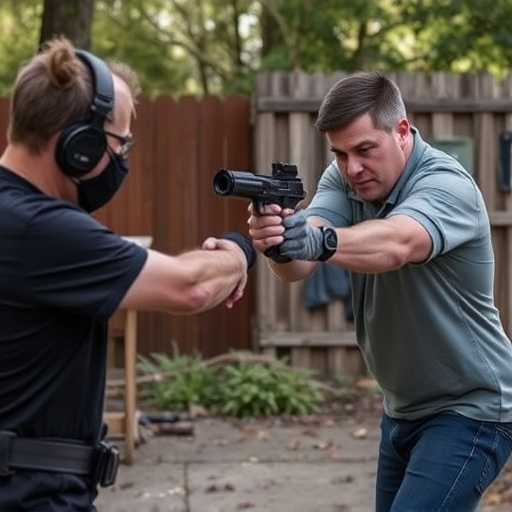
The effectiveness and duration of muscle incapacitation from a stun gun are significantly influenced by its power and voltage output. Higher-powered stun guns deliver more electrical energy to the target, leading to stronger contractions in their muscles, thereby rendering them unable to move or fight back for an extended period. The voltage plays a crucial role in determining the intensity of these muscle contractions, with higher voltages resulting in longer durations of incapacitation.
When considering the best stun gun for home defense, users should look beyond just the loudness of the shock and focus on the power and voltage specifications. A well-designed stun gun with optimal power and voltage settings can ensure that an intruder is temporarily disabled, providing valuable time for homeowners to secure their safety and call for help.
Comparison of Stun Gun Effectiveness Across Different Body Parts
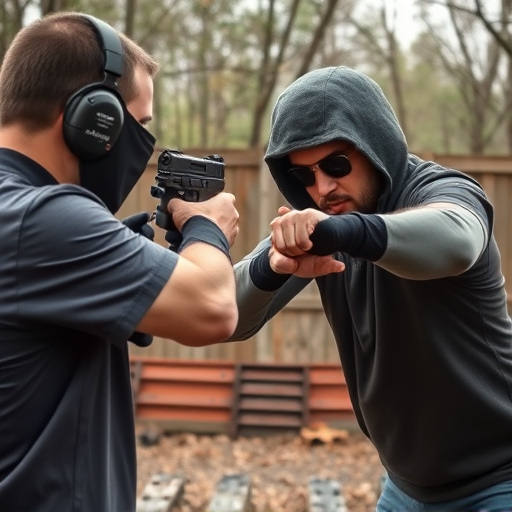
Stun guns are designed to incapacitate an assailant temporarily, providing users with a crucial window of opportunity to escape or seek help. The effectiveness of a stun gun can vary depending on the body part targeted and the specific device used. For instance, targeting the legs or arms can lead to significant immobility, making it easier for the user to retreat safely. The abdomen and chest areas are also vulnerable, as these regions contain vital organs that can be affected by the electric current, causing temporary paralysis.
When considering the best stun gun for home defense, looking at its impact on various body parts is essential. A quality stun gun should deliver a powerful jolt capable of disorienting and immobilizing an attacker long enough for you to escape or call for help. Some models are designed with adjustable settings, allowing users to customize the intensity based on their needs and the perceived threat level. This feature ensures that the stun gun remains effective while minimizing unnecessary harm.
Legal Considerations: How Long Can You Legally Hold Someone with a Stun Gun?
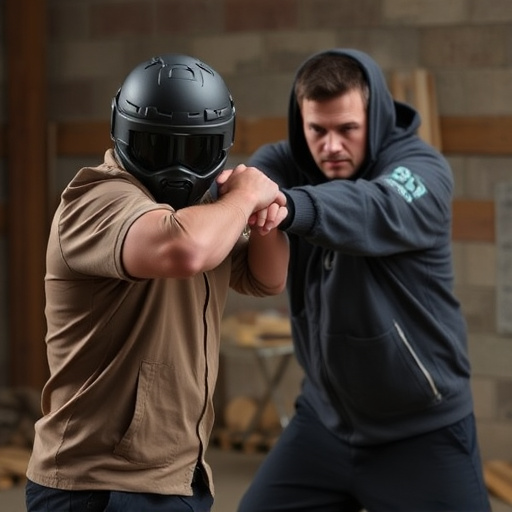
When considering a best stun gun for home defense, understanding legal considerations regarding its use is paramount. The duration for which you can legally hold someone with a stun gun varies significantly based on jurisdiction. In many regions, stun guns are categorized as less-lethal or non-deadly force tools, subject to specific laws and regulations. Generally, these laws dictate that the use of a stun gun is permissible for self-defense or to prevent a crime, but the duration and circumstances under which it can be deployed are strictly defined.
In the United States, for instance, federal law does not regulate stun guns directly, leaving regulation to individual states. Some states allow their use only when an individual reasonably believes they are in imminent danger, while others have more permissive guidelines. The legal duration of incapacitation is also a point of contention; some jurisdictions limit it to the time it takes for the target to become temporarily paralyzed or unconscious, while others set specific time frames (e.g., 5 seconds) after which the device must be disabled or removed. Understanding these legal nuances is crucial for responsible and lawful use of a stun gun in home defense scenarios.
Choosing the Best Stun Gun for Home Defense: Features That Enable Effective Muscle Incapacitation
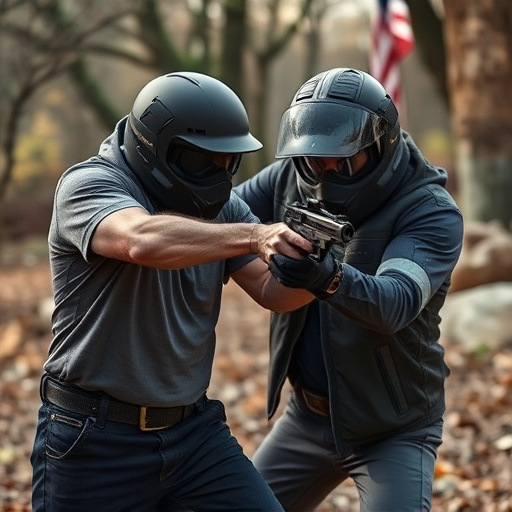
When selecting a stun gun for home defense, understanding muscle incapacitation duration is key to ensuring your safety and that of your loved ones. The best stun guns for home defense are those equipped with features designed to disable aggressors quickly and effectively. High voltage output and precise current control are critical; they ensure a strong enough shock to paralyze muscles without causing serious harm.
Look for models featuring advanced technologies like smart chips that regulate current flow, ensuring optimal impact while minimizing energy waste. A longer pulse duration also contributes to muscle incapacitation, as it increases the overall charge delivered. Additionally, a compact design and easy-to-use activation mechanism are essential for home defense, allowing you to respond swiftly in potentially dangerous situations.
In summary, understanding the duration of muscle incapacitation from stun guns is crucial for both effective self-defense and legal compliance. The article has explored various factors, including power, voltage, body part specificity, and legal boundaries, that influence this duration. When choosing a stun gun for home defense, consider these insights to select the best device capable of swiftly and safely neutralizing potential threats. Remember, knowledge and preparedness are key to ensuring your safety and that of your loved ones.
